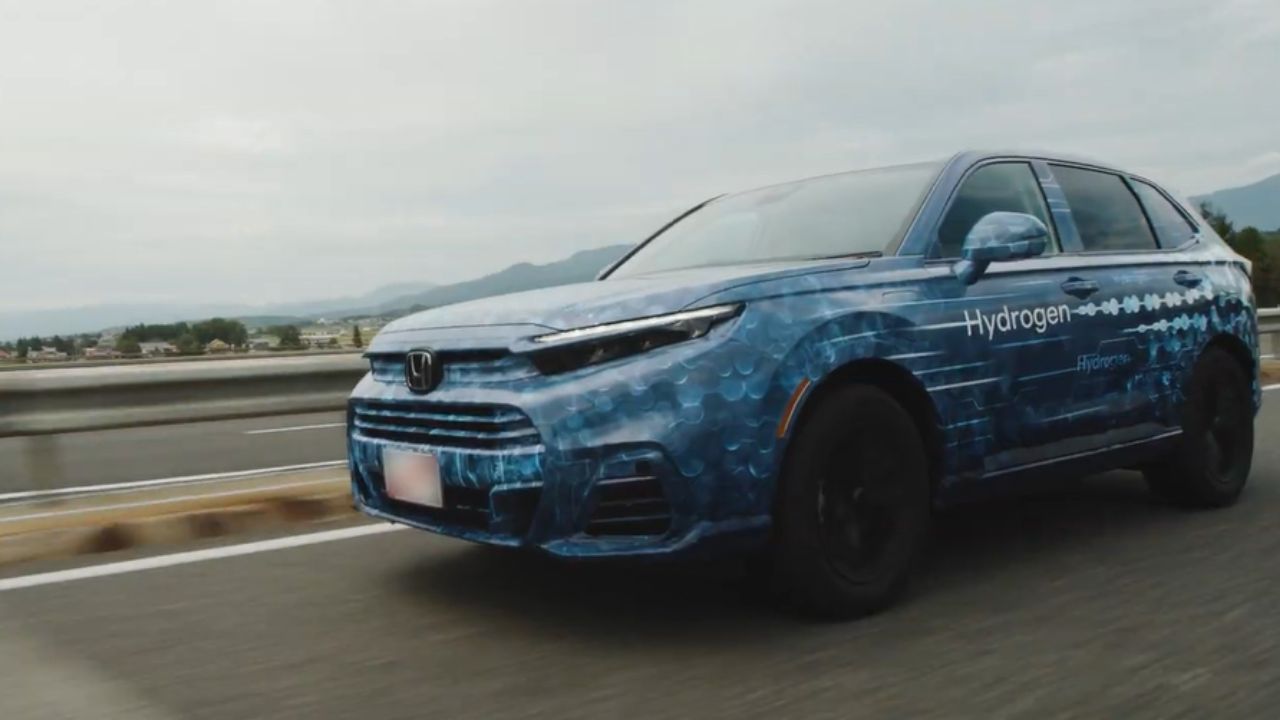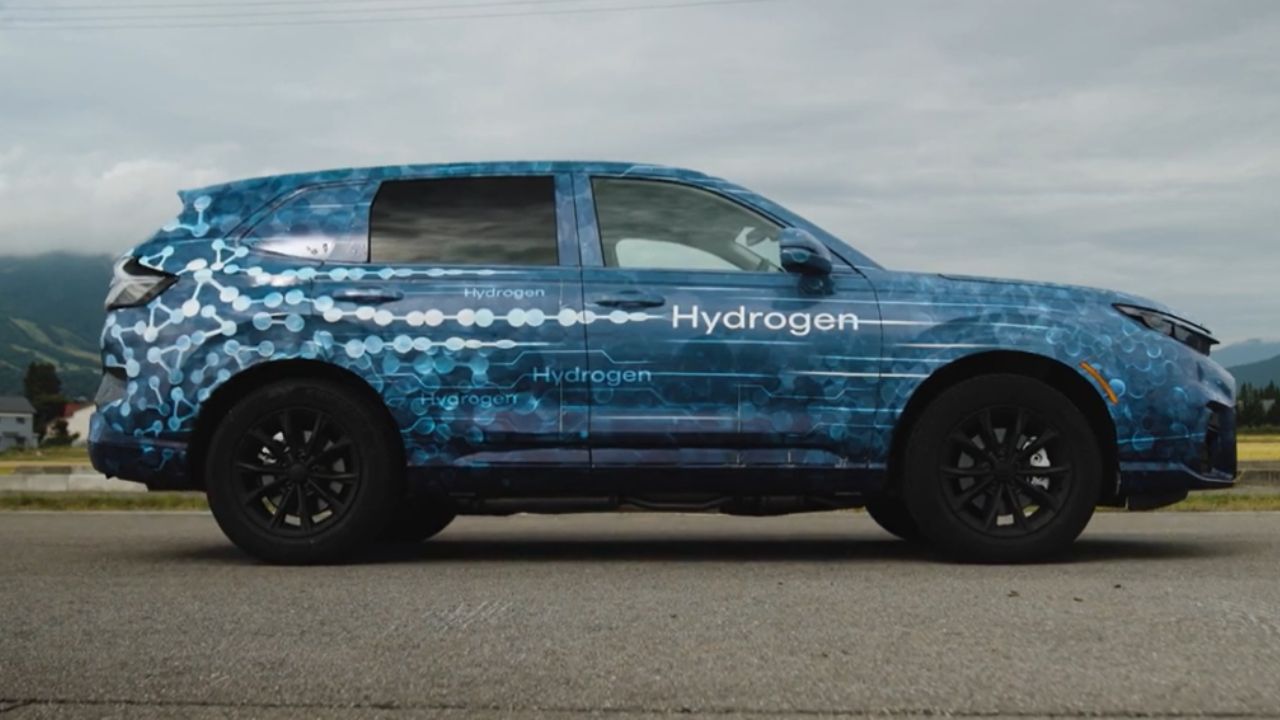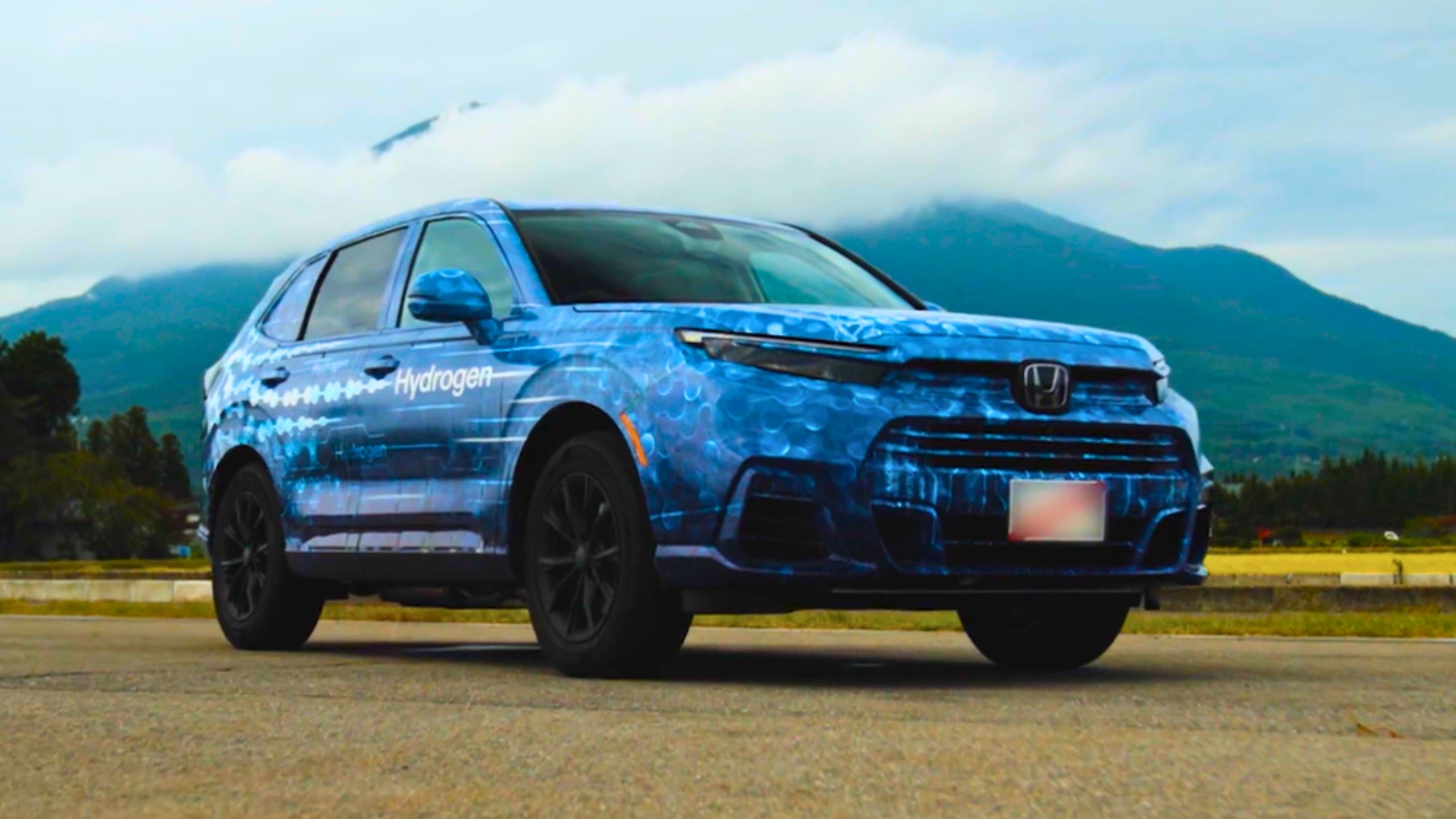Similar to Toyota and BMW, Honda is committed to the potential of hydrogen in the automotive industry. Collaborating with General Motors, they’re developing a next-gen fuel-cell system for an upcoming FCEV based on the CR-V.
Teased in a recent video, this crossover is slated for release this year, serving as an indirect successor to the retired Clarity sedan.
Honda’s approach this time includes integrating a battery pack alongside the fuel cell. The promotional material highlights the advantages of bidirectional charging, showcasing the owner powering a coffee maker remotely using the battery’s energy.
The video depicts refueling at a hydrogen station, with the crossover featuring rear-mounted H2 tanks.

This strategy aims to alleviate range anxiety, given the limitations of hydrogen fueling infrastructure. Production of the CR-V FCEV will take place at the Performance Manufacturing Center (PMC) in Ohio, previously the production site for the Acura NSX, until its discontinuation in 2022.
Coinciding with the video release, Shell announced the closure of all seven hydrogen stations in California, where the previous Clarity Fuel Cell was available for lease.
The prototype in the video, featuring a blue wrap and US-specific features like orange side markers, suggests a focus on the American market. It boasts clear taillights and a charging port on the driver’s side front fender for battery recharging or powering external devices. The exact naming convention for the vehicle remains uncertain.

Honda claims the new fuel cell system will be significantly cheaper to produce and more durable. Upon its release later this year, the CR-V FCEV will be the sole hydrogen passenger vehicle manufactured in the United States.
In a niche segment dominated by a few contenders, such as Toyota’s Mirai and Hyundai’s upcoming Nexo, the CR-V FCEV signifies Honda’s commitment to hydrogen technology in the automotive sector.

